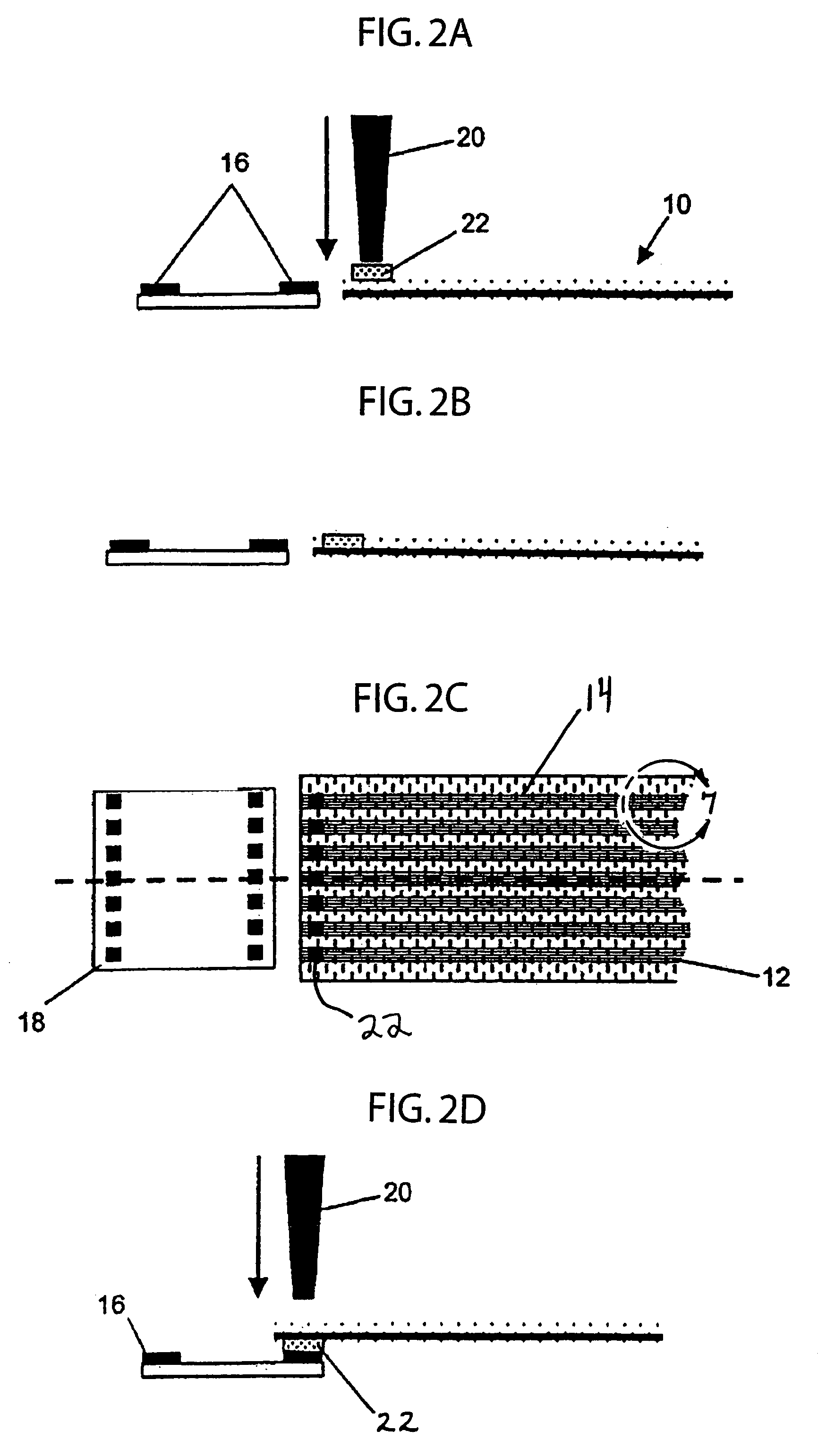Construction and electrical connection technique in textile structures
a construction and electrical connection technology, applied in the direction of connection contact material, coupling device connection, weaving, etc., can solve the problems of industrial scale manufacturing methods that are unknown to date in the entire field of wearable electronics, and achieve the effects of improving electrical connection properties, improving electrical connection results, and improving electrical connection
- Summary
- Abstract
- Description
- Claims
- Application Information
AI Technical Summary
Benefits of technology
Problems solved by technology
Method used
Image
Examples
Embodiment Construction
[0052]FIG. 1 diagrammatically illustrates a first embodiment of a device according to the invention. Reference symbol 10 designates a textile material, which is a fabric. In this case, fabric is understood to mean a textile areal structure comprising two thread systems which cross one another in particular at right angles and are referred to—as usual—as warp and weft. The warp lies in the longitudinal direction of the weaving process and is illustrated horizontally in FIGS. 1(a) and (b). The weft direction runs transversely with respect to the weaving direction. The weft threads are indicated diagrammatically by vertically running, broken lines in FIGS. 1(a) and (b).
[0053]A multiplicity of electrical conductors 12 are woven in the textile material 10. As is illustrated in FIGS. 1(a) and (b), each of the conductors 12 comprises a multiplicity of electrically conductive warp threads 14. The electrically conductive warp threads 14, which are highlighted as horizontally running lines in...
PUM
| Property | Measurement | Unit |
|---|---|---|
| Electrical conductivity | aaaaa | aaaaa |
| Flexibility | aaaaa | aaaaa |
| Electrical conductor | aaaaa | aaaaa |
Abstract
Description
Claims
Application Information
 Login to View More
Login to View More - R&D
- Intellectual Property
- Life Sciences
- Materials
- Tech Scout
- Unparalleled Data Quality
- Higher Quality Content
- 60% Fewer Hallucinations
Browse by: Latest US Patents, China's latest patents, Technical Efficacy Thesaurus, Application Domain, Technology Topic, Popular Technical Reports.
© 2025 PatSnap. All rights reserved.Legal|Privacy policy|Modern Slavery Act Transparency Statement|Sitemap|About US| Contact US: help@patsnap.com



